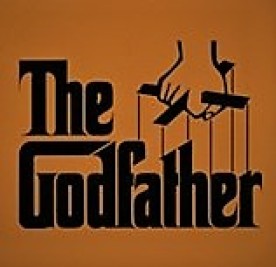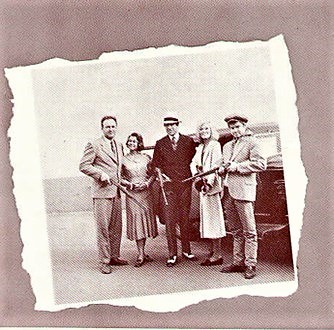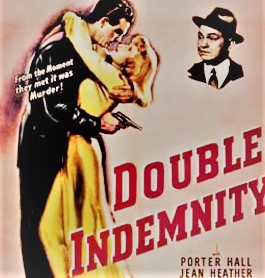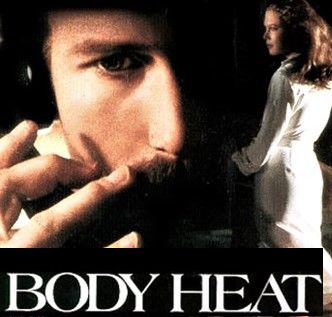Every Friday in March from 1-5 p.m. Large Auditorium
March 8: The Godfather (1972) The aging patriarch of an organized crime dynasty transfers control of his clandestine empire over to his reluctant son.

March 15: Bonnie & Clyde (1967) A waitress falls in love with an ex-con and together they start a violent crime spree through the country.

March 22: Double Indemnity (1944) An insurance salesman lets himself be talked into a murder/insurance fraud scheme of his lover’s husband.

March 28: Body Heat (1981) In the midst of a searing heat wave, a woman persuades her lover, a small-town lawyer, to murder her rich husband.
Criminal/gangster films are one of the most enduring and popular film genres. They date back to the early days of film during the silent era. Stories in this genre often highlight the life of a crime or glorify the rise and fall of a criminal and their exploits. Often real life situations or criminals have been depicted in crime films. These films are usually set in large, crowded cities, to provide a view of the secret world of the criminal: dark nightclubs or streets with lurid neon signs, fast cars, piles of cash, sleazy bars, contraband, seedy living quarters or rooming houses. Film gangsters are usually greedy, street-smart, immoral, meglo-maniacal, and self-destructive. Rivalry with other criminals in gangster warfare is often a significant plot characteristic.
The 1920s decade was a perfect era for the blossoming of the crime genre. It was the period of Prohibition, grimy and overpopulated cities with the lawless spread of speakeasies, corruption, and moonshiners, and the flourishing rise of organized gangster crime.
It wasn’t until the sound era and the 1930s that gangster films truly became an entertaining, popular way to attract viewers to the theatres, who were interested in the lawlessness and violence on-screen. Many of the sensationalist plots of the early gangster films were taken from the day’s newspaper headlines, encouraging the public appetite for crime films. They vicariously experienced the gangster’s satisfaction with flaunting the system and feeling the thrill of violence. Movies flaunted the archetypal exploits of swaggering, cruel, wily, tough, and law-defying bootleggers and urban gangsters.
The coming of the Hays Production Code in the early 1930s spelled the end to glorifying the criminal, and approval of the ruthless methods and accompanying violence of the gangster lifestyle. The censorship codes of the day in the 1930s, notably the Hays Office, forced studios (particularly after 1934) to make moral pronouncements, present criminals as psychopaths, end the depiction of the gangster as a folk or ‘tragic hero,’ de-glorify crime, and emphasize that crime didn’t pay.
In the 1940s, a new type of crime thriller emerged, more dark and cynical – see the section on film-noir for further examples of crime films. Crime films encompass or cross over many levels, and may include at least these different types of films: the gangster film, the detective (or who-dun-it) film, the crime comedy, the suspense-thriller, and the police (procedural) film.
The best ‘60s, 70s and beyond crime/thriller movies feature suspenseful action, political intrigue, and racial tension. Most of these films were quite realistic, and many considered are classic films of the genre.
Join us after the films as the following professionals will participate one or more times for discussions of the films: Ward Haarbauer, professor emeritus of theatre and associate dean of the school of art and humanities at UAB; Jesse Bates, retired chair of theatre arts, Alabama School of Fine Arts; William Gantt, founder of the Southern Literary Trail and director, University of Alabama department of theatre and dance; Ralph Voss, retired professor of English at UA.

![[1] La corporación inteligente (Gurumurthy y Chami)](https://i0.wp.com/discoverhpl.org/wp-content/uploads/2021/11/sunrise-1100x740-1.jpg?fit=1100%2C740&ssl=1&resize=372%2C246)


